 | TODAY IN SCIENCE HISTORY NEWSLETTER - 21 FEBRUARY |
| Feature for Today |
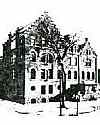 On 21 Feb 1887, a institutional medical laboratory was incorporated, which would be built from private funds provided by one man, Dr. Cornelius N. Hoagland. When opened in 1889, it was the first American institutional bacteriological laboratory for original medical research. He provided over $100,000 to build and equip the laboratory. On 21 Feb 1887, a institutional medical laboratory was incorporated, which would be built from private funds provided by one man, Dr. Cornelius N. Hoagland. When opened in 1889, it was the first American institutional bacteriological laboratory for original medical research. He provided over $100,000 to build and equip the laboratory. The Hoagland Laboratory was described as it was being built in an article in a doctor's journal. (You'll probably raise an eyebrow at how the animals in the basement are described!) Although Hoagland also provided a $50,000 endowment, after 25 years the facility met with financial difficulties, and closed. Not even the building now survives - it was later gutted by fire and demolished. This was a generous effort that did not carry on into our times as a household name, but some good research was accomplished during the time it existed. It's worth reading this article to see the nature of a charitable gift to the community in the nineteenth century. |
| Book of the Day | ||
|
| Quotations for Today | |
 | There is no fun in psychiatry. If you try to get fun out of it, you pay a considerable price for your unjustifiable optimism. |
| I would liken science and poetry in their natural independence to those binary stars, often different in colour, which Herschel's telescope discovered to revolve round each other. 'There is one light of the sun,' says St. Paul, 'and another of the moon, and another of the stars: star differeth from star in glory.' It is so here. That star or sun, for it is both, with its cold, clear, white light, is SCIENCE: that other, with its gorgeous and ever-shifting hues and magnificent blaze, is POETRY. They revolve lovingly round each other in orbits of their own, pouring forth and drinking in the rays which they exchange; and they both also move round and shine towards that centre from which they came, even the throne of Him who is the Source of all truth and the Cause of all beauty. | |
 | I had no specific bent toward science until my grandfather died of stomach cancer. I decided that nobody should suffer that much. |
| Quiz | |
| Before you look at today's web page, see if you can answer some of these questions about the events that happened on this day. Some of the names are very familiar. Others will likely stump you. Tickle your curiosity with these questions, then check your answers on today's web page. | |
| Births | |
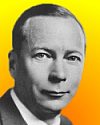 | Henrik Dam, born 21 Feb 1895, was a Danish biochemist who, with Edward A. Doisy, was awarded the Nobel Prize for Physiology or Medicine in 1943 for research into antihemorrhagic substances and the discovery of a certain vitamin (1939). Which vitamin was discovered in 1939? Which vitamin was discovered in 1939? |
| Deaths | |
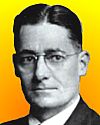 | Howard Walter Florey (1898-1968) was an Australian pathologist who, with Ernst Boris Chain, isolated and purified the substance discovered in 1928 by Sir Alexander Fleming for general clinical use. For this research Florey, Chain, and Fleming shared the Nobel Prize for Physiology or Medicine in 1945. What substance did their research share? What substance did their research share? |
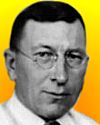 | Sir Frederick Grant Banting (1891-1941) was a Canadian physician who, with Charles H. Best, was the first to extract (1921) the hormone insulin. Injections of insulin proved to be the first effective treatment for diabetes, a disease in which glucose accumulates in abnormally high quantities in the blood. Banting was awarded a share of the 1923 Nobel Prize for Physiology or Medicine for this achievement.  From which body organ did Best first extract insulin? From which body organ did Best first extract insulin? |
| Events | |
 | On 21 Feb of a certain year, Francis Crick and J. Watson discovered the structure of the DNA molecule. In which decade was this discovery made? In which decade was this discovery made? |
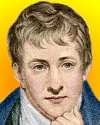 | On 21 Feb 1811, Humphry Davy read a paper to the Royal Society, he introduced a new name for the gas chemists then knew as oxymuriatic gas. In his paper, On a Combination of Oxymuriatic Gas and Oxygene Gas, Davy reported on his numerous experiments with oxymuratic gas, which appeared to have many of the reactive properties of oxygen, though it was not oxygen. This gas was obtained from muriatic acid. What was the name Davy gave to this gas, by which it is now known? What was the name Davy gave to this gas, by which it is now known? |
| Answers |
| When you have your answers ready to all the questions above, you'll find all the information to check them, and more, on the February 21 web page of Today in Science History. Or, try this link first for just the brief answers. Fast answers for the previous newsletter for February 20: Think Globally, Act Locally • Morpheus, the Greek god of dreams • it has sudorific, expectorant and emetic qualities; he used it as a secret remedy to treat dysentry and diarrhoea • decade including the year 1986 • three orbits • Charles Darwin. |
| Feedback |
 If you enjoy this newsletter, the website, or wish to offer encouragement or ideas, please send feedback by using your mail reader Reply button. If you enjoy this newsletter, the website, or wish to offer encouragement or ideas, please send feedback by using your mail reader Reply button. Your click on a StumbleUpon, Google+ or Facebook social button on the site webpages is also a welcome sign of appreciation. Thank you for using them. |
| Copyright |
| To find citations for quotations go to the corresponding webpage by clicking on the “quotes” balloon icon. Sources for the thumbnails appear on today's webpage with the corresponding item. � This newsletter is copyright 2014 by todayinsci.com. Please respect the Webmaster's wishes and do not put copies online of the Newsletter � or any Today in Science History webpage. (If you already have done so, please remove them. Thank you.) Offline use in education is encouraged such as a printout on a bulletin board, or projected for classroom viewing. Online, descriptive links to our pages are welcomed, as these will provide a reader with the most recent revisions, additions and/or corrections of a webpage. For any other copyright questions, please contact the Webmaster by using your mail reader Reply button. |
--
If you do not want to receive any more newsletters, Unsubscribe
To update your preferences and to unsubscribe visit this link


Δεν υπάρχουν σχόλια:
Δημοσίευση σχολίου